Racism
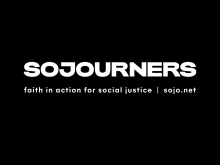
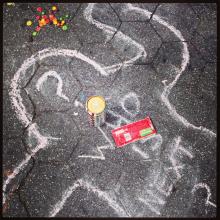
The stories of young black men being killed by white police are sparking a national conversation. However, public responses to these painful stories reveal an alarming racial divide. From an unarmed teenager killed in Ferguson, Mo.; to a 12 year-old boy shot dead in Cleveland; to a white police officer on video choking a black man to death in New York City; and a startling series of similar stories from across the country and over many decades — our reactions show great differences in white and black perspectives.
Many white Americans tend to see this problem as unfortunate incidents based on individual circumstances. Black Americans see a system in which their black lives matter less than white lives. That is a fundamental difference of experience between white and black Americans, between black and white parents, even between white and black Christians. The question is: Are we white people going to listen or not?
White Americans talk about how hard and dangerous police work is — that most cops are good and are to be trusted. Black Americans agree that police work is dangerously hard, but also have experienced systemic police abuse of their families. All black people, especially black men, have their own stories. Since there are so many stories, are these really just isolated incidents? We literally have two criminal justice systems in America — one for whites and one for blacks.
Are there police uses of force that are understandable and justifiable? Of course there are. If our society wasn’t steeped in a gun culture, many of these shootings could be avoided. But has excessive, unnecessary, lethal force been used over and over again, all across the country, with white police killing unarmed black civilians? Yes it has, and the evidence is overwhelming. But will we white people listen to it?

At the point of the writing of this article, it has been 124 days since unarmed 18-year-old Michael Brown was shot six times and killed by Ferguson police officer Darren Wilson.
Blocks from the spot where Brown lay dead in the tightknit Canfield neighborhood of Ferguson, Mo., protestors filled West Florissant Avenue, where Brown had been only minutes before his death. They were met by the local police force decked out in camouflage and body armor, armed to the gills with military-grade weapons, and rolling around in armored cars. Many commented that the streets of Ferguson looked like Fallujah.
It was both shocking and clarifying at once.
For the first time, Americans witnessed real-time outcomes of the National Defense Authorization Act, which funnels military weapons left over from past wars to local police municipalities across the country — in theory, to fortify local efforts in America’s drug war. Cable news cameras swarmed as wartime weapons, tactics, and protocols were enacted on unarmed, mostly black citizens exercising their First Amendment rights to assemble and exercise free speech.
Here’s the thing about war: There are only enemies and allies. There is no in-between.
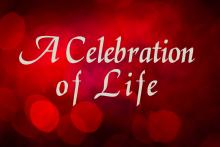
For the past several years, I have been less outwardly celebratory during the Christmas season. No wreaths, trees, or bad sweaters for me; I have chosen to be introspective during the end of the year season in order to keep my focus on the true meaning of Christmas. This has become increasingly difficult, as the process of commercializing the celebration of Christ’s birth begins right after Halloween and extends itself until after the nation celebrates the life of Dr. King in January. This year, it has been increasingly difficult to concentrate on this Season of Advent in light of all of the anger and protests going on around the country. The protests over grand jury decisions in both the Michael Brown (Missouri) and Eric Garner (New York) cases and the heartbreak and anger over the deaths of Tamir Rice (Ohio) and Akai Gurley (also in New York) have served for me as a reminder that we need to rally around life.
Many of those critical of the decisions in these cases say that black lives do not matter, and there is some validity to that in a nation that has never truly been delivered and healed from the effects of chattel slavery. Those on the other side say that these cases have gone to the judicial system and that the system should be respected, the issue dropped, and that personal responsibility is the mindset that will move the nation forward. While there is truth in both of those opinions, I am led to think of the joy the families of these dead men and boys must have felt at their birth – a moment of endless possibilities – and I also think of the finality – the end of chances represented by their deaths.
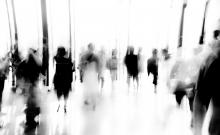
2014 WAS NOTHING if not the year when implicit bias was exposed in law enforcement, the justice system, and media reporting. As the nation sorted out reporting on the police shooting of 18-year-old Michael Brown in Ferguson, Mo., police treatment of protesters, and the accuracy of the reporting itself, the words “implicit bias” or “unconscious bias” jumped to the fore again and again.
According to the Kirwan Institute report “State of the Science: Implicit Bias Review 2014,” “Implicit bias refers to the attitudes or stereotypes that affect our understanding, actions, and decisions in an unconscious manner.”
My question is this: If 2014 opened the eyes of the general public to the presence of implicit biases embedded in our systems, could 2015 be the year when we begin to take a closer look at the impacts of implicit bias in our public systems and structures—and the way we talk about them?
For example, take this tit-for-tat about the education system: On Oct. 11, in his third column in a series called “When Whites Just Don’t Get It,” Nick Kristof wrote in The New York Times, “Too many whites unquestioningly accept a system that disproportionately punishes blacks and that gives public schools serving disadvantaged children many fewer resources than those serving affluent children. We are not racists, but we accept a system that acts in racist ways.”



St. Louis County Prosecuting Attorney Robert McCulloch stood at the podium three nights before Thanksgiving and announced the St. Louis grand jury would not indict police officer Darren Wilson in the shooting death of unarmed 18-year-old Michael Brown in Ferguson, Mo. Moments after the announcement, Ferguson exploded in protests, then rage, then flames. Spontaneous protests also broke out in cities and towns across the country and carried on through the Thanksgiving holiday.
The morning after the announcement I received an email from friend and colleague David Bailey, who shared this song, “Don’t Shoot.” It was written and performed by students at Berklee College of Music, who go by the name Fleeceboi. They were so grieved by the announcement that they stayed up all night writing the song. I listened and wept.

The three of us put our cups of coffee on the counter and reached into our pockets for our wallets. The check-out clerk paid no attention to any of us. He seemed to be staring at someone or something in the back of the store.
“We’re ready to pay,” one of us said.
The clerk kept looking at the back of the store. A few seconds went by before he told us what had his attention.
“I’m watching that boy over there to make sure he don’t steal nothing,” the clerk said.
The three of us looked at the back of the store and realized the clerk was talking about our co-worker.
Four of us were carpooling across Florida on a work assignment several years ago. It took several hours to cross the state. We stopped at a place called Yeehaw Junction off Route 60 to use the restroom and get some coffee.
The three of us at the check-out counter were white, like the clerk. The co-worker accompanying us was black. The clerk assumed that because the three of us were white, we would understand and agree with his attitudes and assumptions about our co-worker – that he was dishonest because of the color of his skin. Needed to be watched. Couldn’t be trusted. Too dangerous to let out of his sight.
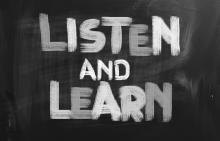
A few days ago, a friend of mine commented on a picture I posted on Facebook. It captured one of those rare moments in the daily grind of stay-at-home parenting where — in the midst of the diaper changes, meltdowns, and mealtime madness — there is a moment of pure delight. In this case, my two sons were sitting together for the first time in the front of a race car-themed shopping cart. My 3-year-old son was thrilled to have his infant brother “driving” with him. I couldn’t resist snapping a photo and posting it immediately. Having two sons of his own, my friend commented, “2 boys! What a great idea!”
I thought of this comment last Monday night when I heard the painful news of the grand jury’s decision in the Michael Brown case, and later when I heard of the same conclusion in the Eric Garner case. Yes, it was a great idea to have boys. My husband and I love them more than anything. They’ve brought more joy into our lives than we could ever have imagined. But, I wondered, how different would our experience be if we were parents of black sons instead of white sons? How much more worry and heartache would we face knowing the cards were stacked against them from birth? What would it be like to have to figure out how and when to have the talk — the one about law enforcement, no second chances and the need to go above and beyond in every situation?
I wasn’t always aware of the vastly different realities for people of color living in this country. My conversion was slow. Not the Damascus Road type of experience where I was blind for three days and then instantly I could see. No, it was and continues to be a long, slow, sometimes painful process of listening and learning.
Protests have again erupted across the United States following the Staten Island grand jury’s decision not to indict Daniel Pantaleo for the choking and killing of Eric Garner. Building off the online mobilizing network established in response to Ferguson, the most recent wave of community actions have gathered support via social media. After events are posted on Facebook or Tumblr, or simply spread through word of mouth, Twitter hashtags provide real-time updates that direct potential supporters to the location of a march.
In Washington, D.C., protests began outside the Department of Justice at 4:00 p.m. and continued throughout the city late into the night — through the National Mall, near the White House, the D.C. police department, and city hall. Comprising many races and many ages, crowds chanted phrases like, “Black lives matter” and “This is what democracy looks like.” One black mother, Shantelle, who was pushing her toddler in a stroller, explained why she was out marching today:
“We’re proud to be American. We’re military. We love our country. But we keep getting it, my son is gonna’ keep getting it. We’re not valued and we’re not looked at. I want him to grow up in a place where he doesn’t have to worry he wore the wrong hoodie, or he was playing with a toy gun, or he gets a chokehold, and dies.”
Another, older woman simply said, “I’m old. I hate that I have to be out here. I’m sick of doin’ the same old stuff.”
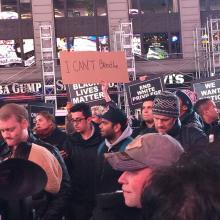
I was in Ferguson Wednesday when it happened: In a morally stunning decision, a Staten Island grand jury announced it would not bring criminal charges against a white police officer who choked a black man to death during a brutal incident last July. Stopped for allegedly selling some loose and therefore untaxed cigarettes, officer Daniel Pantaleo put a “chokehold” on Eric Garner, despite the fact that the move is against NYPD rules. Video of the incident shows Garner uttering his last words, “I can’t breathe.” New York’s medical examiner officially called this a “homicide,” but the grand jury said no charges will be made.
Of course, this comes just 10 days after the Ferguson grand jury decision not to indict another white police officer, Darren Wilson, for fatally shooting an unarmed black teenager named Michael Brown on Aug. 9. Sojourners had convened a retreat in Ferguson for both national faith leaders and local pastors to look deeply at the historical and theological foundations of the Ferguson events and reflect upon how the church must respond. Emotional calls from pastors in New York City came with the horrible news, and people just began to weep — one young man wailing, “This time it was all on video …. and it still didn’t matter! How can I as a black man bring a black son into this world?” Lament and prayers followed with a resolve from an extraordinary two days on the ground in Ferguson — to act.
Local experts in St. Louis County helped us understand the damage done to their local communities for decades that led to the response that erupted after the killing of Michael Brown. We walked silently and prayerfully alongside the memorial to the slain teenager on West Canfield Avenue with black parents imagining their own sons lying there, and white parents realizing this would never happen to our kids. We kept looking at the street where this bloody incident had taken place, feeling more and more doubt about the narratives the county prosecutor had used to exonerate and excuse the white police officer from any responsibility — or at least a trial to publically sort out “conflicting testimonies.”
We met in a church with seven young leaders of the Ferguson protest movement. In just 116 days, these young people had become self-educated and extraordinary leaders, and we listened to a compelling analysis of their urgent situation and how they were trying to apply the history of social movements to change their oppressive circumstances. Their chilling stories of police harassment and brutality, preceded by a narrative of the educational and economic brutality that black young people like them experience daily were transforming words for those of us who listened, spellbound. As I listened, I realized America would be converted by these young people’s honest and earnest conversation — they would win the national debate about our criminal justice system’s response to young people of color.

Just over one week after a grand jury elected not to indict Darren Wilson for the killing of Michael Brown, a Staten Island grand jury has cleared an NYPD police officer of any criminal charge in the death of Eric Garner.
The officer, Daniel Pantaleo, a white male, choked Mr. Garner to death as other police officers stomped on his head. Mr. Garner, 43, suffered from asthma and was suspected of illegally selling cigarettes.Along with other evidence, the grand jury viewed a video recorded by bystanders, which fully captured the violent arrest.


Editor’s Note: On Monday night, it was announced that a grand jury in St. Louis County found no probable cause to indict Ferguson, Mo., police officer Darren Wilson on any of five possible counts. Throughout the country, protests have erupted. For this week’s edition of the Weekly Wrap, we wanted to offer you the 10 most important things you should see, read, digest to understand the situation. We pray for peace.
1. Letter From Birmingham Jail
by Martin Luther King Jr. Far more relevant than it should be. Print it out. Write on it. Pray through it. "In the midst of blatant injustices inflicted upon the Negro, I have watched white churchmen stand on the sideline and mouth pious irrelevancies and sanctimonious trivialities."
2. PHOTOS: Scenes From Ferguson — and Beyond
Slate compiled these chilling shots from protests in Ferguson, New York City, Los Angeles, Washington, D.C., and more.
3. A Sad Night for America
“It is time to right the unacceptable wrong of black lives being worth less than white lives in our criminal justice system." our criminal justice system."
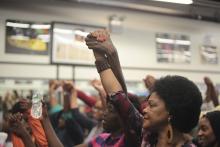
We must engage in courageous conversations. We need to have them in and amongst our own people—our families and our children, our close friends and allies, and in our racial/ethnic groups. A caucus can be an important thing. Make space for the asking of deep questions and the sharing of even awkward sentiments. Why is this happening? What does it mean? How does it affect my soul? Aren’t we past race yet, and can I do anything about this? How does my faith in God relate to these issues? How can I be a healer?
And we must have these conversations across what might seem to be natural divides. We need to have cross-racial/cross ethnic conversations. In order to do this, we must have relationships. We can’t liberate each other while we are in silos. Multiracial/multiethnic congregations like Middle Collegiate Church are critical to the work of racial reconciliation. If your church is diverse, think of ways to encourage deeper relationships. In our context, we have an ongoing small group called Erasing Racism, in which we are having critical conversations about race. If your context is mono-cultural, find a partner with whom to relate. Create a joint worship celebration or prayer vigil during Advent and have conversation as you break bread. Use questions like: When was the first time I was othered due to my personhood? When have I othered someone else? How can these experiences plant seeds for empathy? How did I learn the story of race and what can I do to change it?

